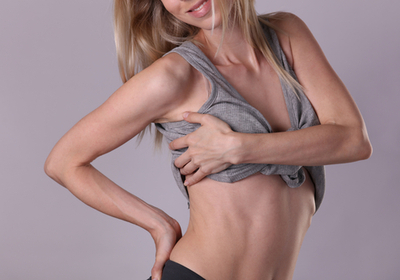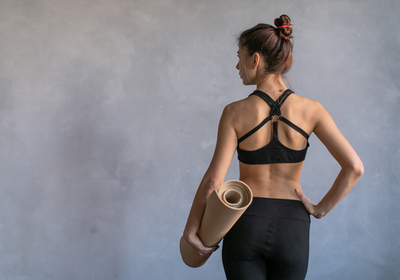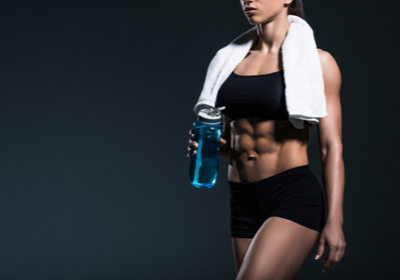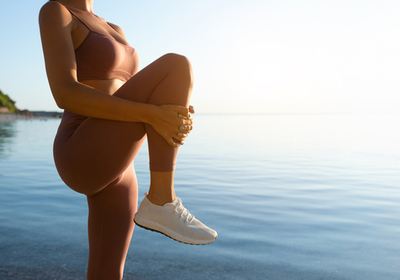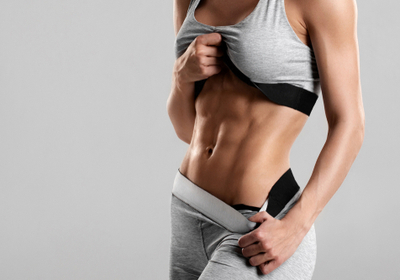VIDEO
Walking Squats, Lunge Variation, Glute Bridge Variation
- Core
- Back
- Legs
- Gluteus
- Hips
- Calves
Level:Beginner
Trainer:
Equipment:Bench, Fitness Mat
Walking Squats, Lunge Variation, Glute Bridge Variation
- Core
- Back
- Legs
- Gluteus
- Hips
- Calves
Level:Beginner
Trainer:
Equipment:Bench, Fitness Mat
1.Start with the squat position with your chest up and knees bent. Try to walk without changing this position. 2.Stand straight with your feet shoulder width apart. Step forward with the right leg into the lunge position, and lower the left knee almost to the floor. Keep your back straight and do not touch knee. Stand upright getting back to starting position and repeat with opposite leg. 3.Lay back on a mat with your shoulders on the mat, your knees bent, feet on the chair, and your palms on the mat. Start moving your gluteus up and down in a smooth and slow tempo.
save to ...
RECOMMENDED FOR YOU
- Core
- Arms
- Back
Duaration: 00:15
save to playlist
- Core
- Legs
- Abs
Duaration: 00:14
save to playlist
- Core
- Trapezius
- Lower Back
Duaration: 00:15
save to playlist
- Core
- Back
- Abs
Duaration: 00:15
save to playlist
- Core
- Arms
- Legs
Duaration: 00:15
save to playlist
- Core
- Arms
- Legs
Duaration: 00:15
save to playlist
- Core
- Arms
- Legs
Duaration: 00:15
save to playlist
- Core
- Arms
- Back
Duaration: 00:15
save to playlist
- Core
- Biceps
- Triceps
Duaration: 00:15
save to playlist
- Biceps
- Upper Back
- Shoulders
Duaration: 00:49
save to playlist
- Core
- Arms
- Legs
Duaration: 00:14
save to playlist
Blog
After the abdominal muscles are prepared, the obliques are the next step. The obliques are several groups of abdominal muscles on either side of the main body. The external obliques are at the top and the internal obliques are at the bottom. Training them with functional exercises includes flexion, twisting, and other rotational movements. In order to properly exercise the lateral muscles, however, it is important to remember that most oblique exercises also involve the other abdominal muscles, especially the medial transverse muscles. Therefore, you need to engage certain areas of the abdominal abs in a conscious manner.
Lateral twists
The basic exercise for the abdominal obliques is the lying lateral twist. Begin with lying on your side with your arm bent at the elbow to support your head. Extend the elbow toward the leg slowly, performing a purposeful contraction of the abdominal obliques.
Prone lateral push-ups
This exercise is fine for developing the neuromuscular links between the abs and the brain. Lying on the back, pull your left elbow in a slow tempo towards the opposite knee. Perform 12-15 reps on each side, and try to achieve a special burning feeling.
Lateral push-ups on a fitness ball
The advantage of this exercise is that you achieve a wide range of motion by bending your body slowly and controlling each movement over the ball. As you lift, feel your side abdominals twist and stretch as you descend. Place your arms behind your neck and do not move them apart.
Cross contacts
Make sure that your legs are straightened up while you are lying on your back. Place your hands on the back of your head and lift your head and shoulder blades slightly. Then do a twisting motion, extending your legs with the opposite arm straight. Perform the same movement for the other side. Repeat at least 20 times.
Lift your hips
Make sure you are lying straight on one side. Your feet should be lying on top of each other and your free arm fixed at the waist. You need to lift your torso so that your body line is completely straight at peak amplitude. At the apex, pause briefly to emphasize the work of the obliques. As you lower your torso, your thighs are only gently touching the ground and the muscles are not fully relaxed.
Developed obliques provide the framework for your abs and make them look amazing, so if you really want to have a great abdomen, you should work both your abs and obliques.
Read more
Did you know that the deltoid muscle is composed of three parts? Therefore, in order to train more effectively, we need to pay attention to each of them. By doing so, harmonious development of the deltoid muscle is possible. Therefore, the goal is to perform special exercises so that the function of each ligament of the deltoid muscle is involved during training.
If you want to strengthen your deltoid muscles, you need to train them regularly, so we recommend that you do these exercises for the deltoid muscles
Side Dumbbells
If you want to develop the posterior deltoids in your shoulders, this is a great exercise to do. It not only works with the deltoids but also the obliques.Hold the dumbbells with a neutral grip and perform bending forward a little keeping your back straight, at this time the dumbbells should be raised to the level of your ears.
Front Pull-Up
This exercise is great for training the upper body and abdominal obliques.In a seated position, hold a dumbbell in each hand. Lower your arms. Next, raise the dumbbells so that they are parallel to the floor. As you do so, keep your arms straight. When they reach shoulder height, stop. Lower the dumbbells in the same manner. Do the same with the other arm.
Lifting to the Side
Experts recommend performing these exercises to effectively train the outer deltoid muscles. The effectiveness of your training depends on proper practice, so follow these instructions exactly. Hold a dumbbell in each hand and stand up straight. Now slowly lift the dumbbells. When the dumbbells reach shoulder height, hold them there. Then lower the hands slowly and return to the position from the start.
Bench Press
Place the barbell on your chest and bring your elbows forward while tensing your abs, glutes, and legs. Repeat lifting and lowering the barbell, then lifting and lowering again.Do not lift as the bar passes over your face, but lower it toward you for optimal trajectory.If the bar remains in front of you instead of over your body at the apex, you will increase the load on your lower back. Try lifting the bar behind your head. Perform 3-5 sets of 6-8 movements each.
Free Arm Pushups
The exercise itself is a repetition of a smaller range of push-ups with the barbell raised.Stand in an inverted position with your feet against the wall. Bend your elbows to lower your body and place your head on the floor. Lower your head backward and repeat. Be careful when lowering your head to the floor (any unintentional movement can injure your neck).Placing a blanket or thick book under your head will make the exercise more effective.To make it more difficult, place some kind of solid support under your arms. The more reps you do in a set, the better. Perform 3-5 sets, depending on your mood.
Developing your deltoid muscles will improve your athleticism and give you a beautiful body, so if you dream of a beautiful body, please do these exercises.
Read more
СWorking on the core muscles is not only essential for good looks, but also for your health. In this article, we will talk about core muscles and how to develop them. So without any further ado, let us begin.
Core Muscles: What Do They Consist of?
To put it simply, core muscles consist of two main groups, which are central and peripheral. The central muscles resemble a sac that protects internal organs by covering the abdominal cavity. In other words, we need these muscles to keep the vital organs safe. In fact, if we didn’t have these muscles, a slight kick in the abdominal area would cause significant damage to vital organs. Central muscles can be divided into several parts, which are:
Front - abs
Lateral parts - oblique muscles and the surrounding muscles
Back - the muscles that support the spine
Upper wall - diaphragm
Lower wall - pelvic floor muscles
The second group of core muscles, the peripheral muscle group, consists of the trapezius, the latissimus dorsi muscle, the pectoralis muscle, the buttocks, and the muscles of the shoulder girdle. These muscles are essential for our posture and back health, which means that developing those is rather important for everyone who wants to be healthy and look beautiful.
Both central and peripheral core muscle groups are extremely significant for our health, posture, as well as the way we look. Therefore, in the next paragraph, we are going to talk about the best exercises for strengthening these muscles.
Best Workouts for Strengthening Core Muscles
So we made it pretty clear that developing core muscles is important for pretty much everyone. So what exercises can you do to strengthen these muscles? Well, here they come:
High plank
Supine toe tap
Hollowman
Bird Dog
Crunches
Bicycle crunch
Superman
Warrior crunch
Supine leg lifts
Elbow to knee
Bridge
Mountain climber
V-sit
V-ups
Side plank
Plank shoulder taps
Turkish get-up
Elbow plank twists
As you can see, there are many workouts that will no doubt help you develop core muscles and eventually become healthy and fit. So why don’t you grab your fitness mat and try at least some of these useful exercises to see their effectiveness yourself?
Wrapping Up
Not only are core muscles essential for beautiful abs, but also rather important for your back health and posture. Furthermore, these muscles protect your internal organs, which is a pretty important feature. Therefore, if you regularly train but you always avoid core exercises thinking they are not as important as the workouts for your legs or arms, you better stop doing that because core muscles are perhaps the most important muscle group in your body.
Read more
People often underestimate hamstrings. Often, focusing on training the quadriceps and calves, hamstrings seem less important. However, you should remember that neglecting any muscle has aesthetic and medical consequences that can be avoided if you work it properly. The reason you shouldn't ignore these muscles is not just about the symmetry and appearance of your body. Hamstring weakness is one of the most common causes of injury in most professional athletes.
The best way to strengthen your leg muscles is to work them out properly. So let's have a look at the exercises.
Barbell 90
The main advantage of this exercise is that you don't need much equipment, just a simple barbell. Starting in a standing position and holding the barbell on your shoulders, keep your back straight. While bending your knees slightly, tense your hips, and bend forward 90 degrees. Then return to the starting position inhaling. Except for hamstrings, this exercise will also strengthen your hips and back.
Hyperextensions
Hyperextensions are a great workout for your hamstrings as well as the lower back and glute muscles. Sit on the hyperextension training machine comfortably with your heels pressed against the platform at the bottom of the trainer. Place your arms crossed in front of your chest or behind your head. Slowly lower yourself down until you inhale and feel the stretch in your lower back and leg muscles. Without stopping at the bottom point, straighten up to the starting position and exhale. Return to the beginning position then. Maintain your head in line with your torso, keeping your back straight throughout the exercise.
Tights Up
This exercise can be done on the playground with two pull-ups or simply by placing your feet on a chair or bench. We will present a variation of the home exercise.Choose a sitting position on the floor with your feet on a chair. Lift your torso with your hands so that the tights are in the air. Bending your knees, raise the tights so that your body is paralleled to the floor. Perform 7-8 repetitions.
Single-Leg and Dumbbell
The exercise requires a good sense of balance and gives you good results. With a dumbbell in your hand, bring one leg back and keep it on the floor until the end of the exercise. Then return to the previous position. Repeat this exercise several times before you have tired.
Final Words
Hamstrings may look insignificant, but that has nothing to do with the fact that you can skip working these muscles. As a matter of fact, stronger hamstrings prevent you from many injuries. Therefore, don't delay and start exercising these muscles now.
Read more
Gorgeous abs are perhaps the biggest dream of all fitness enthusiasts as well as professionals. However, not many people know how to get abs and pretty often make a lot of mistakes while trying to work on their abs. Therefore, in this article, we will talk about abs and how to get them quickly and stress-free
Your Abs Are What You Eat
Not many people know it, but your diet is extremely important for achieving relief abs. Of course, it doesn’t mean that you have to starve yourself or follow weird diets, but working out is definitely not enough to achieve such a goal. The thing is to build muscles you need protein, which means that you have to include more protein into your diet. At the same time, high qualities of sugar and Natrium (salt) provoke swelling that sort of hides the relief of the muscles even if you don’t have much belly fat. Thus, to get the six-pack, you have to make your diet healthier as well as drink enough water, and together with exercising, it will help you get the body of your dreams.
Don’t Overestimate Your Abilities
Many people think that the more they exercise and the less they eat - the better. Obviously, it’s not true. You have to adequately evaluate your abilities and consider those while working out and dieting. Trust us, starving yourself and exercising for 3 hours every day won’t bring better results. It will only damage your health, both physical and mental. So don’t worry if you cannot see the results after a few weeks of training and healthy dieting, just keep going and you’ll surely reach your goal.
Core and Back Muscles Are Essential
Probably 90% of people who would like to get abs usually forget about the core muscles and work only on their abs. This is a huge mistake. As a matter of fact, to have relief abs, you have to work on your core muscles simply because these muscles are close to each other, moreover, abs are a part of the core, so it’s impossible to get relief abs without working on the core. Therefore, working on your core will significantly boost the entire process. In addition to that, you shouldn’t forget about the back muscles. You see, our posture heavily influences the way our belly looks. You have probably already seen skinny people with weird and unproportioned bellies. Well, that happens because they have weak back muscles and their spine is curved in the way that makes their bellies sort of come forward. So in order to avoid that, make sure to strengthen your back muscles too.
Best Workouts for Abs
To wrap up, we would like to list some of the best workouts for abs, core, and back. So here they come:
Plank
Diagonal twists
Deadlift
Pushups
Bent-over row
Plank push-ups
Pull-up
Crunches
TRX suspension row
Leg lifts from lying position
Lat pulldown
Final Thoughts
A stunning six-pack is the biggest dream of many fitness enthusiasts and, luckily, it’s totally possible to make it come true. So consider the things we talked about in this article and start moving toward your goal now.
Read more
SAVE TO ...

